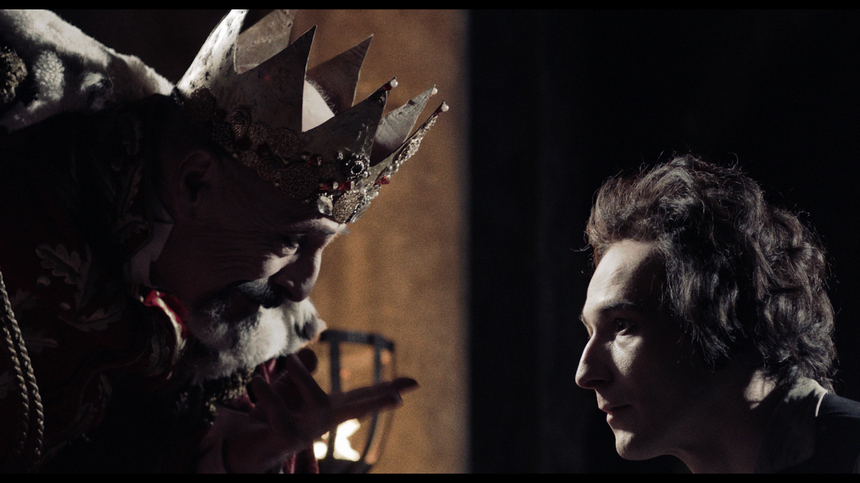SXSW 2018 Review: FIELD GUIDE TO EVIL Explores The Universal Language Of Fear

This is a golden age for the horror anthology, and perhaps no single entity has been more responsible for the recent explosion more than the producing team of Ant Timpson and Tim League. Through their high concept omnibus packages, The ABCs of Death series, the anthology has begun to flourish in a way that hasn't been seen since the last century and fans of world cinema have been given a chance to find new favorite filmmakers a few minutes at a time. Their latest project, Field Guide to Evil is a fun and fascinating exploration of the universal nature of fear, directed by eight of the world's foremost young genre talents, and while the film is predictably uneven in tone and approach (not a bad thing), there's something for everyone.
The eight filmmakers brought on board for Field Guide to Evil have all made an impact on the festival circuit with their previous features, and a few have even gotten a bit more of a foothold with their films achieving the increasingly rare benefit of a domestic theatrical release. Representing their countries of origin in Field Guide to Evil are Veronika Franz & Severin Fiala (Goodnight Mommy), Peter Strickland (The Duke of Burgundy, Berberian Sound Studio), Agnieszka Smoczynska (The Lure), Katrin Gebbe (Nothing Bad Can Happen), Can Evrenol (Baskin, Housewife), Calvin Reeder (The Oregonian, The Rambler), Ashim Ahluwalia (Miss Lovely, Daddy), and Yannis Veslemes (Norway). Each was tasked with unearthing a little known folk tale from their homeland and using it to scare the bejeezus out of the audience for twelve to fifteen minutes. The results are wonderfully bizarre and diverse and proof that there are still stories out there left to tell.
Each of the films does a pretty solid job of delivering solid imagery and even a few scares, however, because of the relatively independent nature of each of the segments from one another, there isn't much that tonally ties the segments together. Right from the start, though, it's clear that these filmmakers all have an incredible amount of talent that doesn't require a full feature to see. The opening segment from Franz & Flavia is a beautiful treatise on forbidden love and lust with a terrifying twist, something akin to the naughty nuns of the '70s, or even the corrupted sisters of The Devils. Beautiful forest imagery frames a story of two women – not nuns, but of a pious people - whose drab lives are only brightened by each other, but not without consequence. From there the films speed off in different directions, from serious - the above-mentioned Franz/Flavia segment - to silly, but all with their own unique charms.
Typically in a project like this it's easy to pick out a weak link or two that destabilize the film, but these films are all so different and clear in their goals that it's difficult to complain. I really enjoyed Calvin Lee Reeder's goofy take on American folk lore that plays like a cross between Wrong Turn and the no-budget hillbilly horror comedies of the '60s and '70s. Ashim Ahluwalia's colonial terror, mostly in spoken English, has echoes of The Island of Lost Souls and Freaks. Yannis Veslemes tale of a Greek underworld Christmas goblin just looking to have some fun has some really beautiful visuals and fun effects. However, if I had to pick a favorite, it would definitely be Peter Strickland's closing segment set in medieval Hungary.
Never one to be frightened of pushing the envelope, a trait I admire about Berberian Sound Studio far more than I enjoyed that film, Strickland's story of a pair of brothers vying for the heart of a beautiful maiden is a dialogue free pantomime filled with perhaps the most particular imagery and effects of the entire anthology. Arch without being cringe worthy, Strickland's piece feels very unlike his previous work. Whereas in his other films, the overarching feeling is one of dread or anxiety, with this project he allows himself and his audience to have fun while still giving them a good jolt.
Filed Guide to Evil is definitely a step in the right direction, and a concept that I can see having a longer life as a series than ABCs of death for a couple of reasons. The longer films mean that filmmakers have more freedom to tell their stories while still being contained enough to keep budgets manageable, as well as the fact that the film's well-defined concept opens it up to folk tales from every region on Earth. I'd welcome a similar stories from Southeast Asia, Africa, South America, and so many other places with their own cultures, fears, and anxieties. Let's make it happen!







